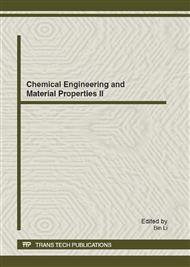p.620
p.625
p.630
p.634
p.639
p.643
p.647
p.651
p.655
Study on UV-Curable Hybrid Adhesives with Adjustable Refractive Index
Abstract:
UV-curable cationic hybrid adhesives containing TiO2 nanostructures were prepared by using 3,4-epoxycyclohexylmethyl-3',4'-epoxycyclohexanecarboxylate (CE) as UV-curable cationic monomer, triphenylsulfonium hexafluorophosphate salt (PI-432) as photoinitiator and titanium-tetraisopropoxide (TIP) as inorganic precursor. Morphology of the UV-cured hybrid adhesives was characterized by atom force microscopy (AFM). The effect of TIP content on refractive index was studied. The results showed that TiO2 nanostructures, the average diameter of which was 20 nm or so, could be uniformly dispersed in hybrid adhesives in presence of 5 wt% 3-glycidoxypropyltrimethoxysilane (GPTS) coupling agent. And the refractive index of hybrid adhesives could be controllably adjusted from 1.5019 to 1.5449 with the change of TIP content. At the same time, the bonding strength of hybrid adhesives were also improved.
Info:
Periodical:
Pages:
639-642
Citation:
Online since:
July 2012
Authors:
Price:
Сopyright:
© 2012 Trans Tech Publications Ltd. All Rights Reserved
Share:
Citation:


